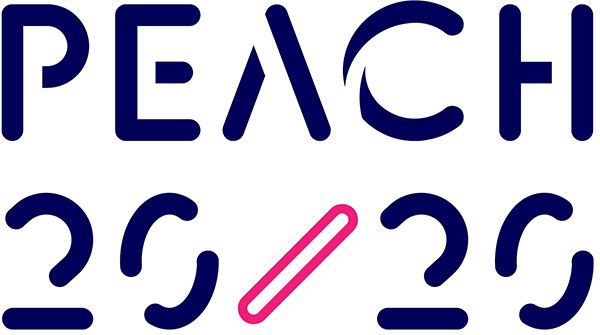Why people are the new business currency
)
It’s 15 years since we launched the Peach Business Tracker to provide a weekly and monthly barometer of like-for-like sales for pub, bar and restaurant businesses. It was a simple, quick and, I like to think, a pretty reliable benchmark that soon became the industry standard.
Back then sales success were the big focus, underlined by the frantic phone calls we used to get at the Peach offices on a Friday afternoon from finance departments if the numbers were ever late getting out. We knew then that the sector was becoming hooked on data.
Revenue trends, of course, remain of serious importance - and the Tracker (under the stewardship of CGA by NIQ) now has over 100 companies awaiting its output. But in these days of data proliferation, it’s far from the only metric to be monitored.
Consumer feedback has perhaps seen the biggest explosion in data collection and analysis - whether it’s satisfaction ratings, net promoter scores or some new form of loyalty calculation. Collating customer insight is, quite rightly, becoming ever more complex and sophisticated.
Now the industry is acknowledging that there’s another valuable asset it needs to measure - its people. Staff turnover, retention rates and employee loyalty are fast becoming the new business currency - and gauge of success.
It was telling that when Mission Mars, operator of Alberts Schloss and Rudy’s Pizza, announced its latest results, it was not just the continued like-for-like sales growth across its two brands that CEO Roy Ellis highlighted. That there’s space for another 10 Albert's Schloss sites across the country was eye-catching enough. But Ellis also focussed on the fact that the business had been able to drive down staff turnover to close to 55%.
The first surprise was the number itself. It may be different in other industries, but 55% looks like a real achievement when I’ve always been told team turnover in restaurants and pubs usually hovers just above 100% every year. Knowing that industry average is another issue, of course. What to benchmark against?
But by quoting the staff turnover number alongside sales, Ellis showed that it’s a metric that’s seriously important to the business and is on the board agenda. How many others can say that?
It’s about company culture in the end. Keeping teams engaged, happy to work and wanting to stay are the foundations for delivering great customer experiences and strong financial performance.
There are cost implications too of being able to retain staff - spending significantly less on recruitment, onboarding and training, while retaining experience and valuable know-how. With staffing costs rising elsewhere, what’s not good about that?
As Robin Rowland, the former YO! Sushi boss and now partner at international investment house TriSpan, told me when I interviewed him at a recent conference, a stable workforce is now one of the four major criteria he looks for when deciding to invest.
Which brings us to the eternal question of what does good looks like? In a market where part-time and transient working is part of the mix, what is the sweet spot for retention, for example?
Honest Burger co-founder Philip Eeles has teamed up with recruitment specialist Abi Dunn to bring together a consortium of 20 or so mainly restaurant and bar brands to try to answer just that. Their This.Is.Pineapple project is collecting quarterly data to begin benchmarking job tenure, staff turnover, including 90-day turnover, and pay, among other things.
It will be interesting to see which emerge as the most significant metrics and how competition can improve company and industry-wide performance in keeping staff. If the Peach Tracker taught us anything, it’s that companies love to tell their competitors and investors when they are beating the benchmark.
Equally important will be learning what really does drive loyalty and retention among front-line teams. Is it pay, scheduling, flexibility, training or just having an understanding and encouraging GM - or all of those?
Pay is the issue that is not going away. Too many people, including senior politicians, still see hospitality as a low wage environment. When hearing sector leaders complain about the living wage and a highly-likely ban on zero-hours contracts, it is perhaps not surprising.
As is often the case, looking to what Wetherspoon’s does may not be a bad idea. When the high-street pub group came under attack recently from TUC head Paul Nowak as an “anti-union employer” that has built its business model on “low-paid, insecure employment”, chairman Sir Tim Martin hit back in his usual robust manner.
While deriding Nowak’s comments as “completely inaccurate and unjustified”, Sir Tim pointed out that staff retention was at its highest ever level, with 11,066 of the company’s 42,854 staff having worked there for five years or more, with 3,895 having worked for 10 years and 632 for 20.
Also 15,778 employees were shareholders, and for the first six months of this year, £21.2m was paid in bonus and shares – with 99% going to staff below board level and 89.6% to staff working in pubs. Since 2007, £504m had been paid to employees in free shares and bonus (around 55% of company profits). You get the picture.
Perhaps most pertinently, he said all staff were offered guaranteed minimum hours contracts, 96.9% of which had accepted them.
If staff loyalty and well-being are so important that they are worth measuring, perhaps more operators should ditch zero-hours contracts now before legislation bans them, and introduce minimum hours - and see how much that improves staff goodwill.
How companies treat their teams will perhaps be the big differentiator - and correlating all the increasing data about teams, customers and sales will prove the adage that happy, high performing staff, make happy, high-spending customers, that keep the tills ringing. So, how they measure and compete on that data will become even more important.
This article first appeared in MCA in July 2024.


